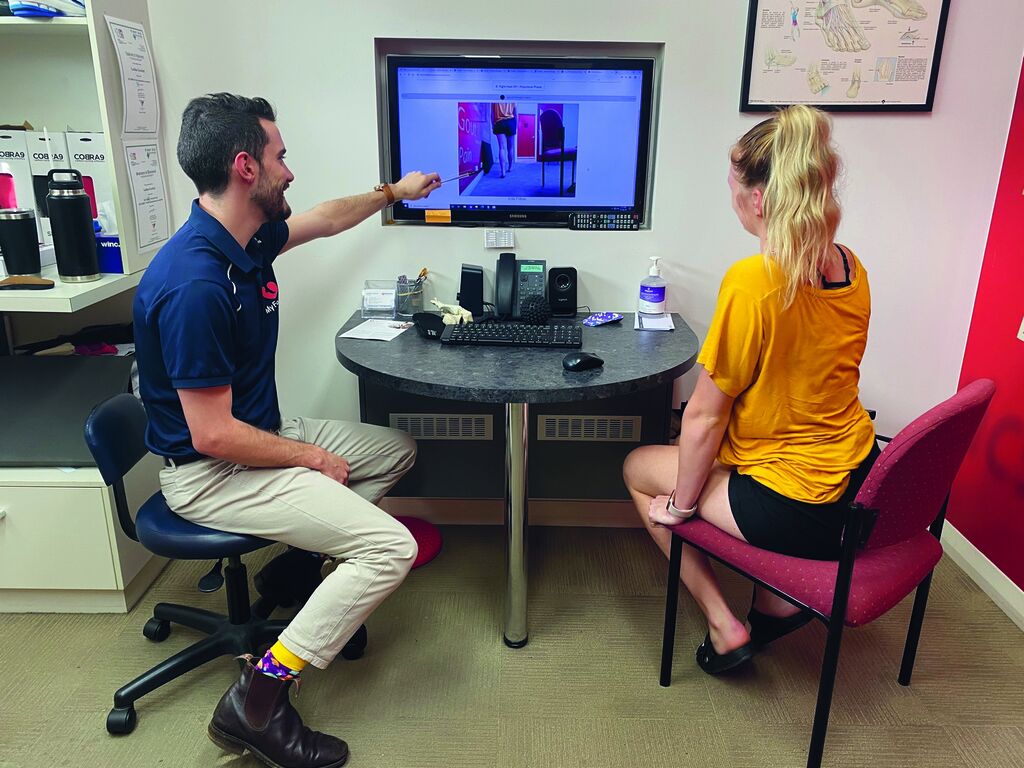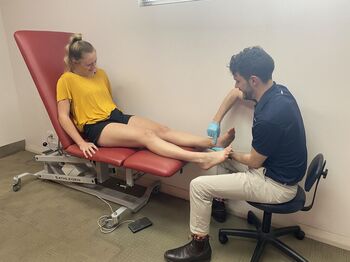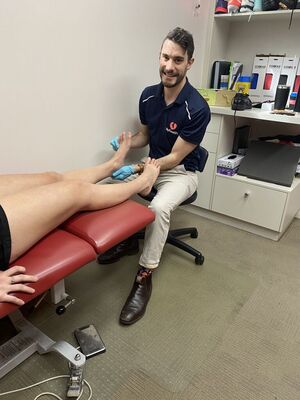Podiatrist vs physiotherapist: The team at PhyxMe explains

When it comes to foot or ankle pain, people often wonder which health professional they should seek advice from.
Although the answer should be easy it often isn’t, as it can depend on multiple factors and what the underlying cause of pain or dysfunction might be.
Sometimes gold standard care requires a collaborative approach.
Physiotherapists aim to assist their patient through the assessment, diagnosis and management of injuries or diseases to return them to pre-injury function or improved quality of life.

Although there are physiotherapists who specialise in specific areas, most physios treat a whole range of musculoskeletal conditions from head to toe.
On the other hand, podiatrists specialise in the assessment, diagnosis and management of lower limb, foot and ankle conditions.
Podiatrists will look to control biomechanics and correct malalignment to reduce load on joint and soft tissue structures.
For example, you sprained your ankle.
Initially you may present to your physiotherapist for acute management strategies including education, reduce inflammation and allow healing, restore range of motion and improve strength, allowing return to optimum function.
Through assessment it may become evident that there is an issue with chronic instability and recurrent ankle injuries secondary to poor foot biomechanics.
A referral may also be made to a podiatrist for further assessment of your foot and ankle alignment, establishing whether support through means such as footwear and orthotics are required.
Physiotherapists and podiatrists often work best when working collaboratively to provide gold standard patient care.

3 tips for preventing foot injuries
With injuries and pain, prevention is always best.
Choose supportive footwear. Keep an eye out for a firm heel counter and stiff sole with sufficient flexion at the toes. A foot and ankle moving all over the place can lead to injury, a supportive shoe will look to stabilise this.
Warm up. A few minutes of functional movements such as a jog and drawing circles with your feet can be enough to warm up the muscles, joints and ligaments to prevent injury.
Conditioning and mobility. Our muscles are the first line of defence against stress and injury. Gradually build up strength through the lower limbs and partner with regular stretching.
For more specific advice, talk to a podiatrist or physiotherapist.

Q&A with Elyse Dolman,
PhyxMe Senior Physiotherapist
Why did you choose physio?
Growing up I always wanted to be a high school PE Teacher. I am not exactly sure what changed my mind but during year 12 I decided I might like to be a Physiotherapist. Fourteen years on and I still don’t regret my decision.
Do you have any special areas of interest?
After spending the last five years working with the Australian Defence Force, I would say I enjoy treating lower limb injuries, especially complex overuse injuries. They can have a huge impact on patient function and significantly limit high performance athletes. Although often frustrating for patients, when managed and progressed appropriately outcomes are generally positive, and athletes can return to their required level of function.
Most challenging case or client?
A patient who fractured his C1 vertebra (that’s the top of his neck). He would have to be the most positive and determined patient I have ever seen. From what started as a possible life or death situation and months in hospital ended with a full return to competitive volleyball. Don’t get me wrong the rehab was long and hard work but it truly shows what persistence and determination can achieve.
Favourite Olympic or sporting moment?
Everyone loves someone that just has a crack. My favourite Olympic moment would have to be Eric “the Eel” Moussambani who competed in the 2000 Olympics after never having seen an Olympic sized pool prior to the event.
Favourite quote?
“Life isn’t about waiting for the storm to pass; It’s learning to dance in the rain” by Vivian Greene.








